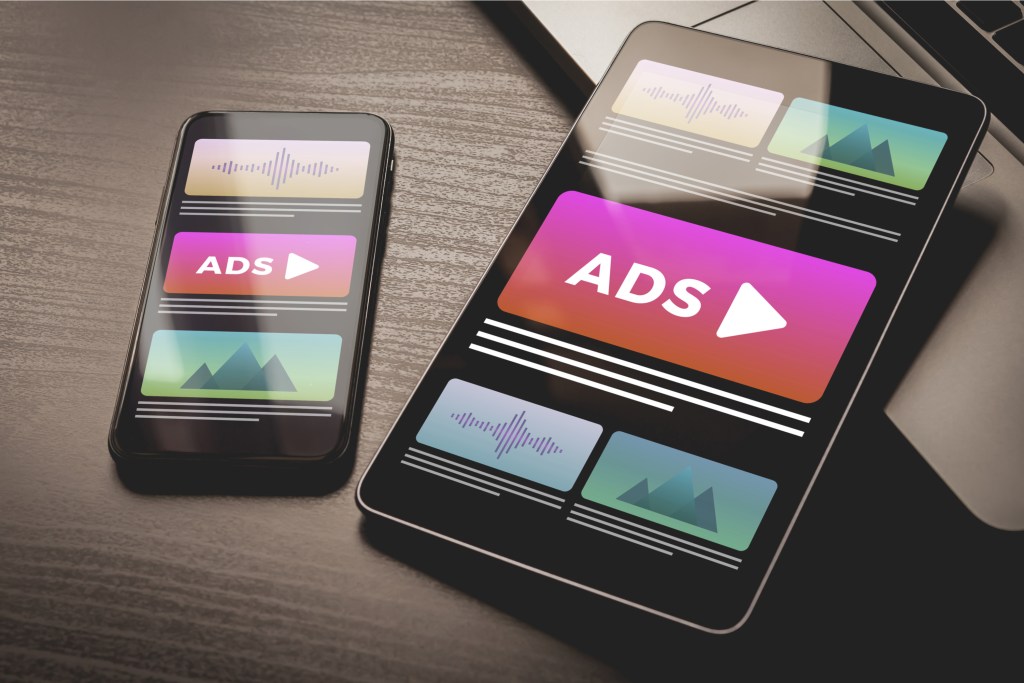Advertising vs promotion. They’re the same thing, right? Not so fast. While the two terms are often used indistinguishably, they’re not exactly the same thing. Each term actually involves quite different things. There are similarities, however. Both advertising and promotion include aspects of communications, marketing, and public relations.
In terms of similarity, both use the same mix of tools marketers use when designing promotions or advertisements. Yet, if they’re so similar, what’s the main difference between promotion and advertising? In the following article, we’ll lay it all out for you.

Definition of advertising
To get started, you need a proper definition of advertising. The truth is that it is an impersonal promotional tool. Through (mostly) paid media, advertisements draw public attention to products and services. Most ads are designed to convey one message and one message alone to the greatest number of people in the least amount of time possible. Essentially, it is a tool used to sell (mainly) commercial items.
Advertising is also a means of persuasion used by organizations of all types. In terms of for-profit companies, advertisements are used to persuade a specific target audience to purchase a product or service. There are also ads used to persuade an audience that a company is better than its competitors. There are many channels used for advertising, which include:
- Television
- Radio
- Newspapers
- Magazines
- Billboards
- Pamphlets
- Posters; and
- Internet-based pay-per-click ads (PPC ads)
The cost of advertising is relatively high. The idea behind advertising is that the target audience will become attracted to a company’s product or service, and there will therefore be a corresponding increase in demand for them. Long-term results are seen in sales figures.
A great benefit to advertising despite the cost, and the reason companies continue to engage in it, is that ads create an impression in peoples’ minds. Over time, the more someone sees an advertisement, the more likely they are to remember the products or services featured in it. When a product or service becomes top-of-mind for an individual, it won’t matter if the competition’s product is better than yours or not.
There’s a much higher chance the customer will purchase the first product or service that pops into their brain when they’re looking for the solution to a specific problem. For example, Tide became famous as a “go-to” laundry detergent beginning back in the 1940s when they launched their advertising campaign with the slogan, “America’s Washday Favorite.”
The phrase stuck, and Tide is still with us three-quarters of a century later.
Definition of promotion
The definition of promotion differs from that of advertisement in that it focuses primarily on pushing short-term sales. While advertisement aims to build brand awareness and persuade someone to buy, promotion seeks to push people into buying as soon as possible. Because advertising can be an element in promotions, one could say that some promotions are all about pushing a sale while preparing the way for other advertisements to do their job in the long term.
There are many promotional tactics in which a company can engage. Just some of these include:
- Free distribution of samples
- Two items for the price of one
- Discount coupons
- Rebates
- Offers on special events
- Contests
- Trial offers; and
- Value-added services
These methods can help companies gain a bump in sales due to impulsive purchases, especially when customers know they “could” get something more by choosing to buy from your brand.
Also, as previously stated, promotions often involve public relations, marketing, and awareness-driven advertising.
Key differences between advertising and promotion
Here is a quick list of the primary differences you’ll find between advertising vs promotion:
- Due to high costs, advertising is best for medium to large enterprise businesses. In contrast, even small businesses can engage in promotion.
- Advertising has a long-term impact.
- Promotion has a short-term impact.
- Promotion is a marketing mix variable.
- Advertising may be an element in a promotion.
- Advertising is done to build brand awareness, image and to increase sales over the long term.
Conclusion
As you can see, advertising and promotion are intricately intertwined. It’s hard to separate the two since they’re both a part of an overall marketing strategy. Because of that fact, there are areas where they effectively overlap. Many of the same techniques are used in their deployment and use.
Recall that advertising is more expensive and less cost-effective than promotion. However, you have the opportunity to generate more profits with advertising over the long term. With that said, it is mainly medium and larger businesses that can full-on advertising campaigns. At the same time, promotion doesn’t have to be wildly expensive, it is more short-term in nature, and even small businesses can utilize it.



